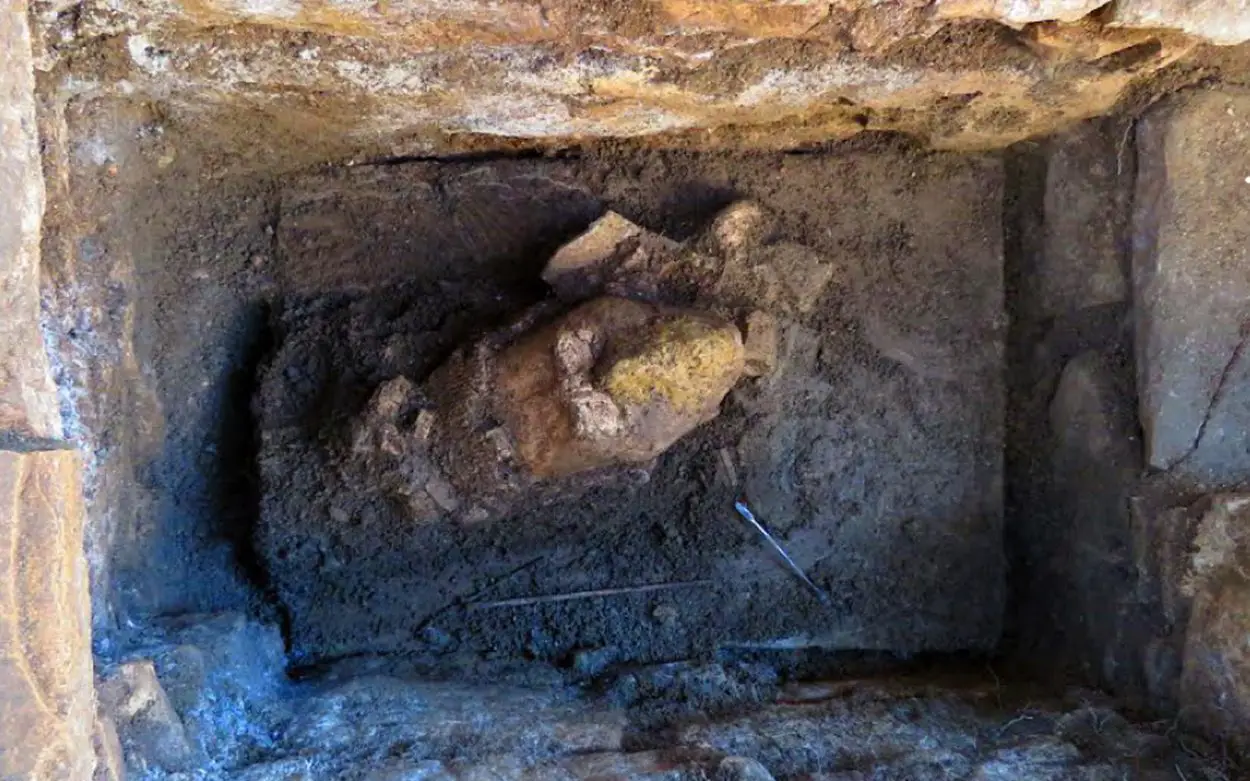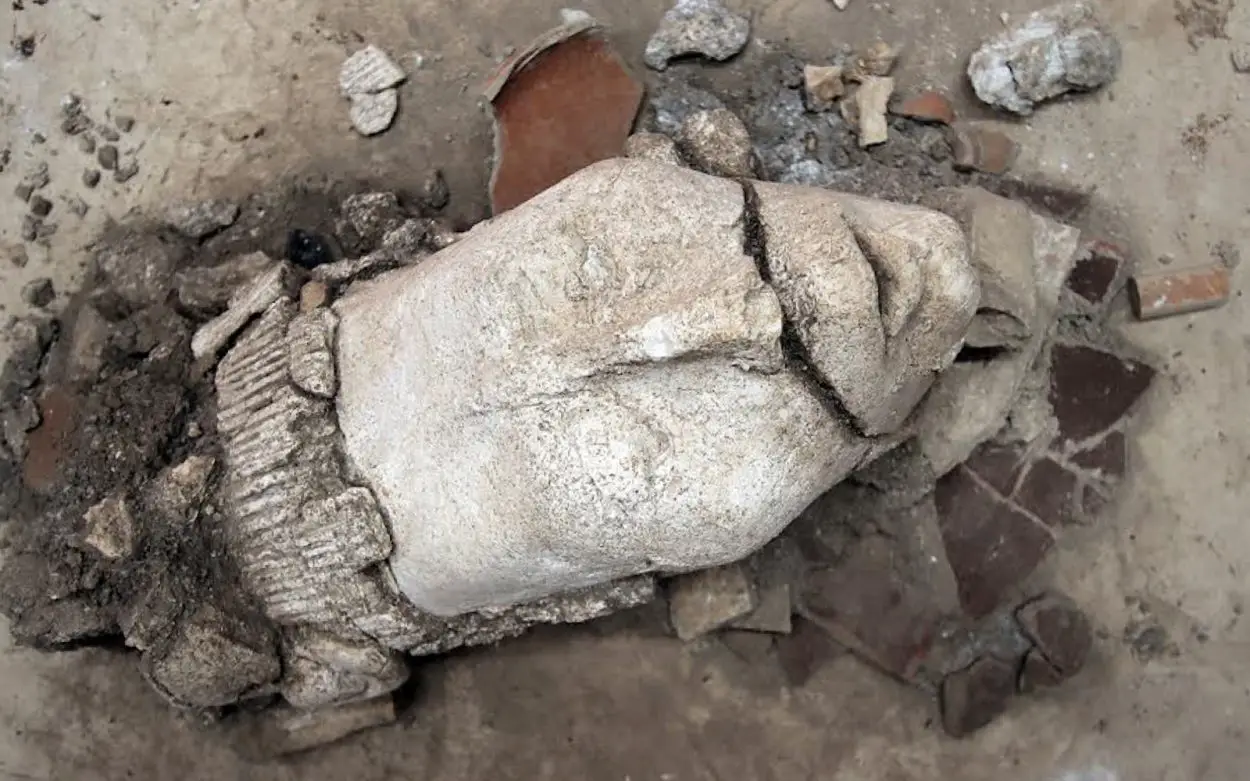Archaeologists from the Instituto Nacional de Antropología e Historia (INAH) have discovered a stuccoed stone head of a Maya god associated with maize.
The team were excavating in the Maya city state of Palenque, located near the Usumacinta River in the Mexican state of Chiapas.
Palenque, also known as Lakamha in the Itza Language (meaning “Flat-Place-River”), is mostly known for having some of the finest architecture, sculpture, roof comb and bas-relief carvings from the Maya world.
The team were conducting restoration works as part of a project funded by the Department of State for Cultural Preservation. Whilst removing the fill from a corridor connecting House B and House F in the palace complex, the researchers found a receptacle which contained a severed stucco head deposited in a small pond.

The researchers believe that this environment was to emulate the entrance to the Maya underworld. The Maya believed that the universe was divided into the sky, the earth and the underworld, in which venerated sites such as caves and cenotes functioned as a portal or gateway to Xibalba, a subterranean realm ruled by the Maya death gods and their helpers.
The sculpture, originally conceived as a severed head, would have been placed by the Maya on a tripod (evidenced by the discovery of a ceramic tripod) and was positioned in an east-west orientation to symbolise the birth of the corn plant with the first rays of the sun.
Similar iconography can be found in sites from across the Tikal region from the Late Classic period (AD 600-850 and the Early Classic Period (AD 150-600), and in representations in the Dresden and Madrid codices where deities appear with their heads severed.
INAH Chiapas Centre researcher Arnoldo González Cruz said: “The discovery allows us to further understand how the ancient Maya of Palenque relived the mythical passage about the birth, death and resurrection of the maize deity.”
Header Image Credit : INAH







